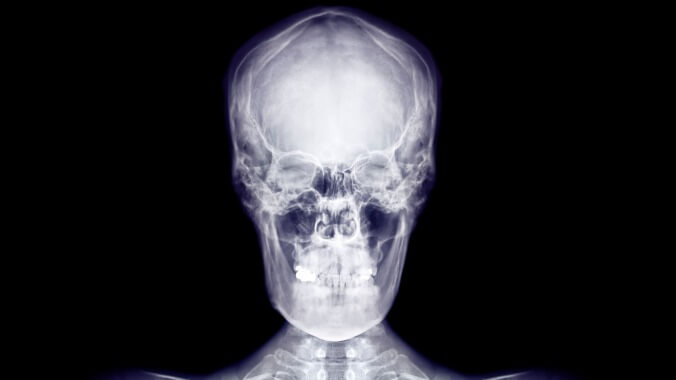The pandemic has many of us feeling pretty vulnerable these days, so it’s important to keep things in perspective as much as possible. Next time you’re worried about the perils of daily life, think about it this way—you could be a disgusting monstrosity encased in an exoskeleton due to the whims of evolutionary chance!
“It’s time to face the truth: You’re just meat in a sack tied to a bunch of carefully organized rocks,” Dr. Joe Hanson, host of the online PBS series tells us at the outset of the video—which, okay Dr. Joe, you now have our undivided attention. But, as it turns out, that’s a very good thing. Insect and crustacean exoskeletons may be extremely strong and durable for their sizes, but that kind of biological framework doesn’t scale up very well.
Roughly 20 pounds of bones comprise about 8.5% of the average human body, and can withstand one ton of physical pressure, “a compromise between strength and mobility,” explains Dr. Hanson. Exoskeletons require an exponential amount of growth to support itself, which is why bugs these days are so relatively tiny compared to their mammalian counterparts. Our divergence with modern day insects dates back approximately 558 million years ago, when the first forms of life split into two groups, one developing exoskeletons while the other began forming primitive spinal structures.
Fast forward to today, and you have a bunch of upright apes running around, flinching at the slightest chance of touching one of the billions of exoskeleton-clad bugs inhabiting the world. What a wondrous, diverse, disgusting planet we live on, right?
[via Digg]
Throw Great Job, Internet a bone at [email protected]









































